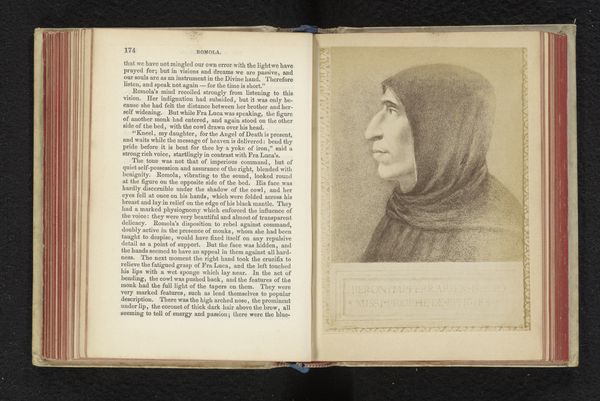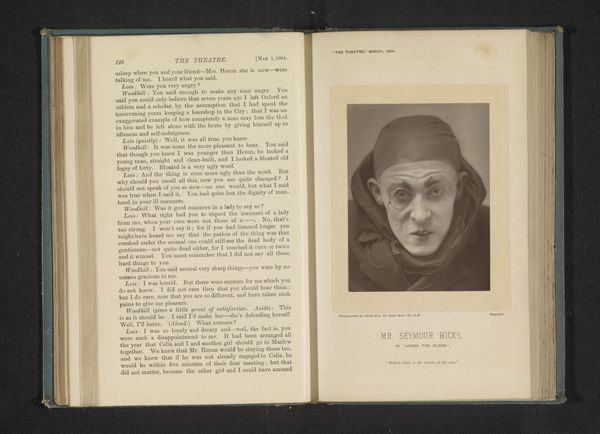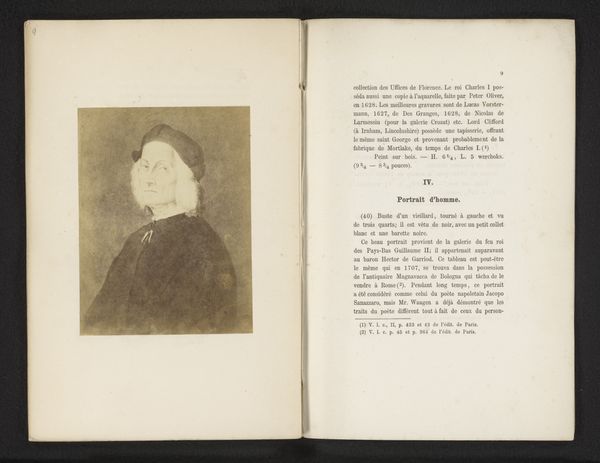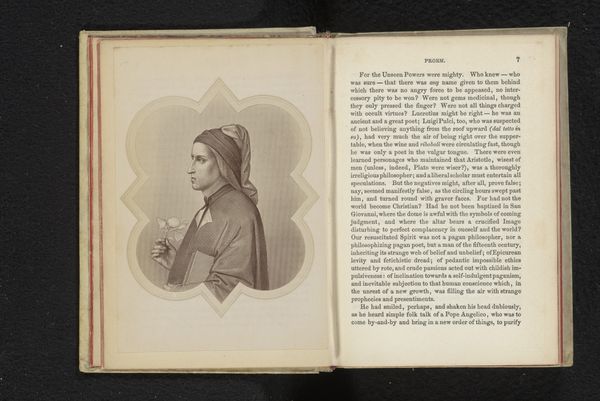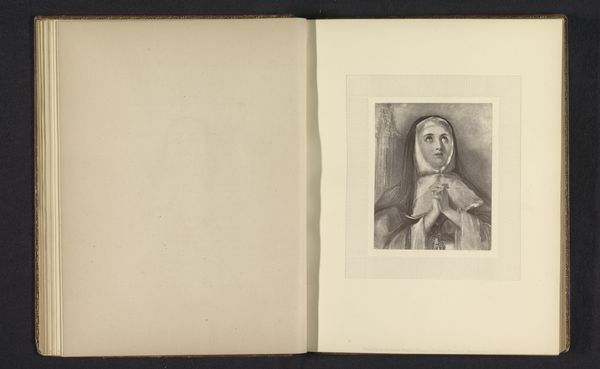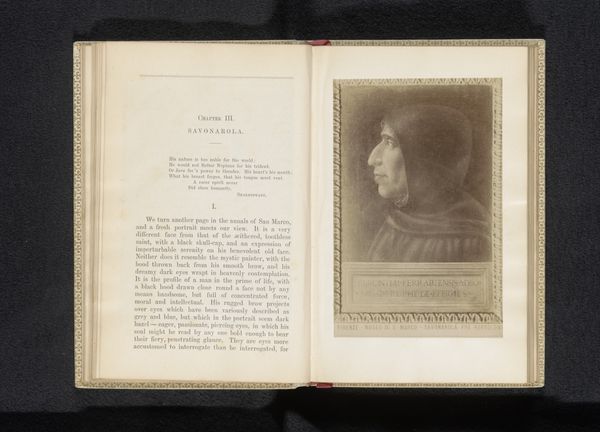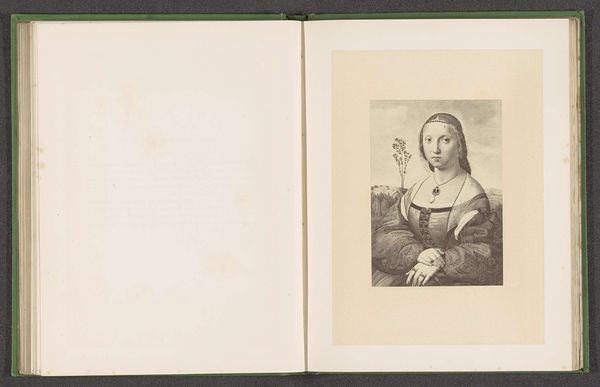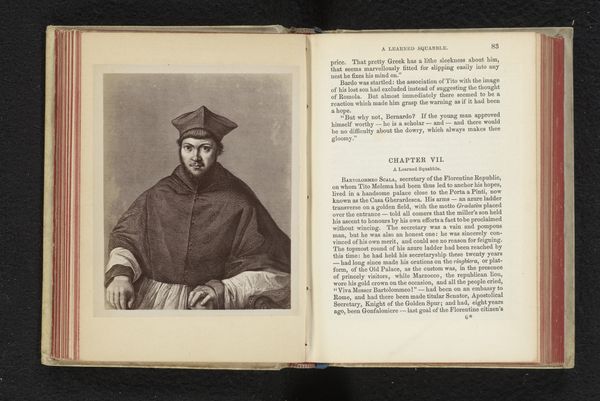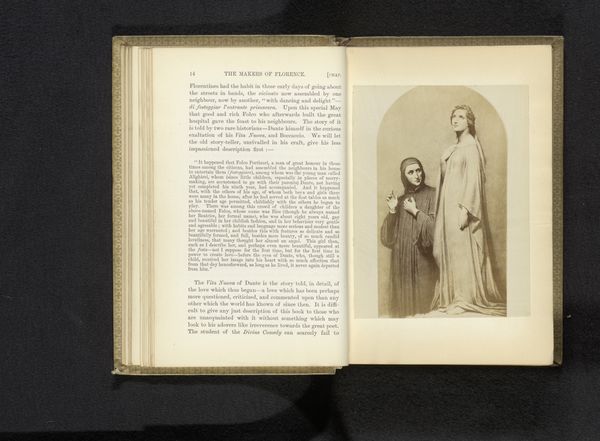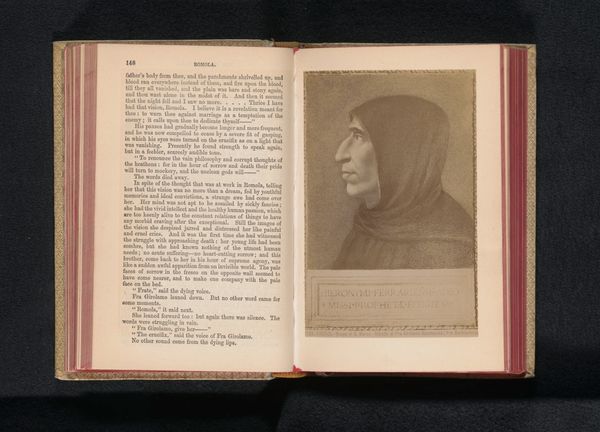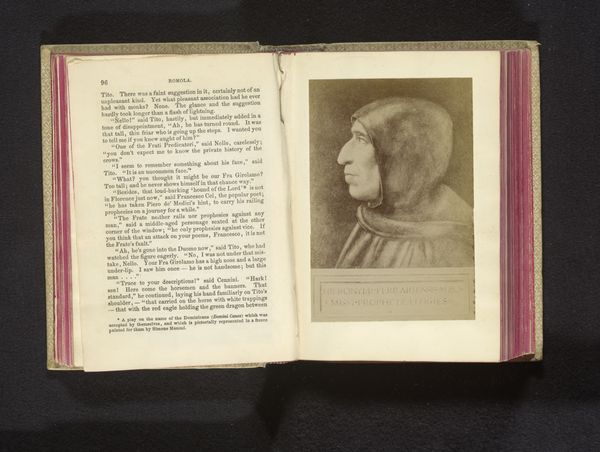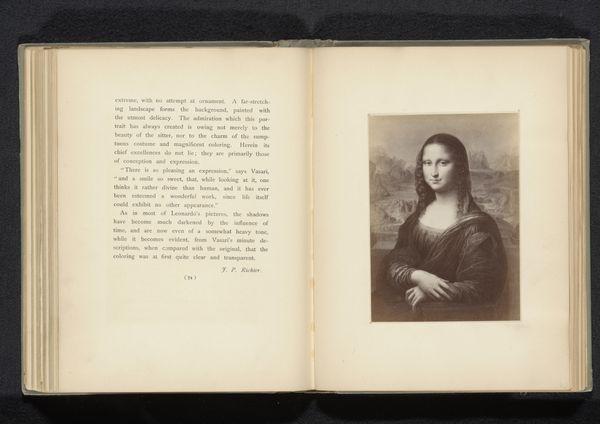
Fotoreproductie van een schilderij, voorstellende een portret van Fra Angelico before 1890
0:00
0:00
drawing, print, photography
#
portrait
#
drawing
# print
#
photography
#
coloured pencil
#
italian-renaissance
#
early-renaissance
Dimensions: height 129 mm, width 62 mm
Copyright: Rijks Museum: Open Domain
Curator: This rather faded photographic reproduction captures an earlier portrait of Fra Angelico, sometime before 1890. The overall tonality of the print evokes a quiet stillness. Editor: My first impression? Severe. There's a certain austerity, even with the softness of the photographic medium. The way his habit frames his face—it’s all very contained and self-possessed. Curator: The piece comes across very formally in part because of its composition; we are looking at a typical head-and-shoulders portrayal. Though humble in its sepia tones, there is a touch of Renaissance idealism that lingers through the photo. The slight upward gaze…it suggests an otherworldly quality. Editor: Indeed, this upward gaze immediately catches one's eye, establishing a clear hierarchical direction within the pictorial space. Moreover, this composition, with its emphasis on verticality and containment, generates a subtle sense of restraint which underscores his devotion. Curator: Absolutely, his gaze carries so much… It reflects his deeply religious beliefs. Angelico, after all, was called “angelic” for his pure life. I sense he’s trying to catch hold of something intangible beyond mere mortal recognition. Editor: Yes, it is palpable, particularly as it appears here mediated through the then novel technology of photography. It’s a complex interplay, though, between capturing an 'essence' versus simply replicating an image. The photograph, even as a copy, offers another way into interpreting artistic genius. Curator: Which offers a nice echo considering Angelico himself tried to show people unseen and sublime scenes. What strikes me most is the paradox within this piece. The photograph, typically associated with objectivity, attempts to relay an intensely spiritual portrait. It seems to me it offers access to devotion in its own mechanical way. Editor: I see your point. In essence, it demonstrates that any art medium, even in its attempt at mere replication, contains interpretative possibilities, opening channels for understanding subjects long past. This allows our understanding and our personal interaction to take place outside historical confines. Curator: In that spirit, what's your final reflection, then? Editor: That considering his fame rests largely on frescoes bursting with bright colours, to view Angelico rendered like this has altered, even shifted, something fundamental about how I understand Renaissance devotional expression. How about you? Curator: The whole process makes me appreciate the different layers here—the original artistic intent, the interpretation through photography, our interpretations now. Ultimately, the work keeps prompting different questions across the eras, allowing us new encounters with not only Fra Angelico himself but our assumptions surrounding artistic creation and perception.
Comments
No comments
Be the first to comment and join the conversation on the ultimate creative platform.

